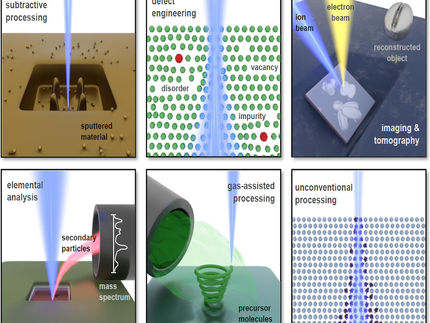Does Decrease in Scientific Papers Provide Evidence of Scientist Shortage?
Science Watch Study Shows United States Loses Dominant Share of World Science
Advertisement
Over the last two decades, the United States has seen its share of world output of scientific papers steadily decrease, while the collective shares of nations in the European Union (EU) and the Asia Pacific region have increased, according to a recent study published in Science Watch, the bimonthly newsletter of Thomson Scientific, a business unit of The Thomson Corporation.
The study was conducted using citation data from the more than 8,700 prestigious, high-impact journals archived in the National Science Indicators(R) database.
U.S. World Share Decreases, EU and Asia Pacific Grow Steadily
In the mid-1990s, the United States' declining share of world science output was intersected by that of the ascending European Union. Today, the EU has reached almost five percent more than the United States' share. The Asia Pacific region enjoys the most dramatic increase in share percentage, up by approximately 12 percent. If current trends continue, the Asia Pacific region will likely outstrip the United States by 2011.
In 1981, when the company began tracking the data, the United States accounted for 39.7 percent of the total number of papers published in the world (172,132 papers); the EU accounted for 32.3 percent (139,954 papers); and the Asia Pacific region accounted for 13 percent (56,644 papers). By 2004, the EU accounted for 38 percent of the total number of papers (292,067); the United States accounted for 33.3 percent (256,374); and the Asia Pacific region accounted for 25.3 percent of papers (195,001).
When looking at individual fields of study, the EU and Asia Pacific nations both produced a higher percentage share in five of the Thomson Scientific indexed fields: Agricultural Sciences, Chemistry, Engineering, Materials Science and Physics.
Is This Data Evidence of a Scientist Shortage?
Though the National Science Board in 2004 warned of an impending scientist shortage in the United States due to international competition and a post-9/11 culture, Thomson Scientific experts don't feel the United States' loss in share is necessarily reflective of such a trend.
"It's important to note that, while the percentage of share of these countries may have fluctuated, the numbers of papers published in all regions have increased," said Henry Small, chief scientist of Thomson Scientific. "This makes it particularly difficult to attribute this trend to any purported U.S. shortage of scientists.
"These fluctuations in share can be attributed to a number of factors - it's a complicated matter," said Small. "Globalization and increased international collaboration have likely played a role - particularly in the Asia Pacific region, where the rise as a percentage has been the most significant."
While the United States' share of world science has lessened, it doesn't mean it has been publishing any less. In fact, the United States published nearly 50 percent more papers in 2004 than it did in 1981, the first year of available data, while the world total of papers increased by 56 percent (near-parallel growth).
For more information on the Science Watch survey, or for raw data information from the survey, please use the buttom 'Contact / Info'
























































